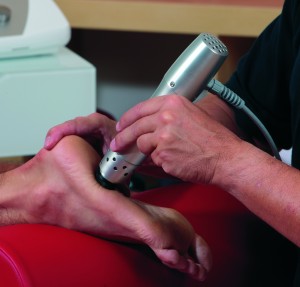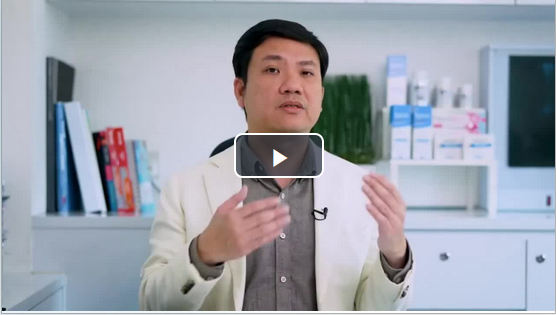Heel Pain Treatment
Why Do I have Heel Pain?
Do I Need To Do An X-ray or MRI?
How Can Heel Pain Be Treated?
Why Are My Treatments Not Working?
What New Treatment Options Can The Pain Relief Clinic Offer For My Heel Pain?
Causes of Heel Pain
If you have been experiencing heel pain, it could be due to a variety of reasons which include plantar fasciitis, Achilles tendonitis or even general inflammation in the area. It can also be caused by another underlying medical condition such as arthritis, gout and even neurological conditions.
Major Types by Position of Heel Pain
- Behind the heel
- Beneath the heel
- Within the heel bone itself
Major Types by Condition
- Plantar fasciitis
- Sprains and strains
- Fracture
- Achilles Tendonitis
- Bursitis
- Ankylosing spondylitis
- Osteochondroses
- Reactive arthritis
- Tarsal tunnel syndrome
- Chronic inflammation of the heel pad
Why Do I have Heel Pain?
Heel pain is a very common foot condition.
It is most often caused by plantar fasciitis, sometimes associated with heel spurs.
Heel pain may also be due to other causes such as a stress fracture, tendonitis, arthritis, nerve irritation, or a cyst.
As we apply pressure to the heel when we stand and walk, it becomes prone to injuries after repetitive stress from walking and exercises, causing swelling and pain in the heel.
Some foot conditions such as flat feet and high arched feet also make a person prone to suffer from heel pain. Heel pain is seen commonly in athletes as well as in people with uncomfortable footwear.
Do I Need To Do An X-ray or MRI?
With a good history and clinical examination, most doctors are able to make a clinical diagnosis for heel pain.
X-rays are sometimes useful for assessing the severity of the condition and to exclude a calcaneal (heel) spur.
In most patients, MRIs are usually not necessary in the early stages unless severe underlying conditions are suspected.
How Can Heel Pain Be Treated?
Some self-help measures that can help include:
- Avoid walking bare foot and on hard surfaces
- Stretching exercises of the calf muscle
- Use of good footwear and insoles
- Freeze a golf ball and roll it under your foot
- Most doctors can offer anti-inflammatory medications and possibly steroidal injections which can help in some cases.
- Physiotherapy is another well accepted option.
- Using techniques such as manual therapy, stretching and muscle strengthening exercises, it can have a good result in many patients.
Why Are My Heel Pain Treatments Not Working?
While treatments of heel pain can be very effective, patients may experience problems such as:
- The inflammation is too severe
- Thickened scar tissue might have developed., especially if your pain has been present for more than a few months.
- You are unable to rest sufficiently because of work or sports training activity
- There is underlying arthritis
In very rare cases, surgery might be a recommended heel pain treatment option.
In most other cases, even where pain and stiffness are severe or have been present for a long time, there are multiple non-surgical options that a patient should first consider.
As surgery can have significant risks and cost, it is important to discuss this carefully with your doctor.

What Is Your Doctor’s Experience Treating Heel Pain?
Dr Terence Tan has been treating heel pain at The Pain Relief Clinic since 2007. For the past 15 years, he has been using non-invasive technology to help patients recover from heel pain problems.
He is accredited with both the Family Physician Accreditation Board and the Singapore Medical Council. He is also a member of the Singapore Medical Association and The Pain Association of Singapore.
Committed to providing quick heel pain relief, his philosophy is to always offer patients the safest, most effective and least invasive technology driven treatments possible.
What New Treatment Options Can The Pain Relief Clinic Offer For My Heel Pain?
At The Pain Relief Clinic, we adopt a biomedical targeted approach that addresses the underlying causes of Heel Pain.
This allows us to provide treatment strategy using medical technology in a comprehensive and cost-effective way.
Depending on the severity of your condition, some of the useful options that can give very good results include:
- Dietary Correction
- Non-Invasive Indiba Therapy which gives rapid and long lasting recovery
- Shockwave Therapy which stimulates deep tissue healing very cost effectively
- Regenerative Platelet Rich Plasma
In particular, Shockwave Therapy is an internationally established method of treating heel pain through stimulating tissue repair.
Employing high energy acoustic waves, shockwave induces new blood vessel growth and tissue regeneration.
Although introduced to Singapore for well over a decade as one of the best treatment options available for pain relief, its use has up till recently been limited by the small number of doctors offering this option.
Treatment with earlier generation shockwave machines were also quite painful, usually requiring local anesthesia.
They were also very costly devices resulting in expensive treatments, which not many patients could afford.
Fortunately medical technology research in recent years has resulted in new devices which provide much more comfortable treatments and no longer require any local anesthesia injections.
They have also dramatically brought down treatment costs and made shockwave very affordable to patients with heel pain.
Clinical studies have demonstrated extremely high success rates, especially in cases which have failed to respond to other approaches.
What sets this treatment apart from traditional treatments is that it treats the musculoskeletal pathology instead of just offering symptomatic relief.
Approved by the US FDA and EU CE marked, the German Shockwave technology offered at The Pain Relief Clinic is recognized by doctors around the world.
If you are suffering from heel pain, or if your condition has not improved despite other treatments, we are able to help.
Simply call us at +65 6732 2397
or leave a message below for Dr Tan to discuss a customized non-invasive solution for you.






